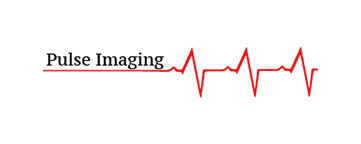FIBRINOGEN QUANTITATIVE
Also known as: Serum fibrinogen test, factor-1 fibrinogen, functional fibrinogen test, fibrinogen activity test, hypofibrinogenemia test.
What is the fibrinogen quantitative test?
Fibrinogen quantitative test measures the amount of active fibrinogen present in your blood. This test is also done to check the performance of fibrinogen in the blood. Fibrinogen is a protein made by the liver and then released into the bloodstream. It is one of the 13 coagulation factors that help normalize blood clotting. Blood clotting or blood coagulation is a cascade of processes that causes the platelets to aggregate at an injured site, i.e. when there is an injury in any body tissues or blood vessels, the process of hemostasis starts which causes the formation of a platelet plug at the injured site by platelet aggregation to avoid excess bleeding. This platelet aggregation requires the presence of specific coagulation factors, including fibrinogen. Fibrinogen is the factor that finalizes the work of all other factors. Therefore, its level increases if injury or inflammation occurs in the body.
What is this test used for?
This test shows fibrinogen levels in the blood and its ability to form blood clots. The test is used in different conditions to diagnose, observe, and screen different conditions related will blood clotting.
- If you are suspected of a clotting condition, fibrinogen levels may be taken for the final diagnosis.
- If you are confirmed to have a clotting disease and are taking fibrinogen replacement therapy, fibrinogen levels may help observe and monitor the disorder.
- Fibrinogen quantitative test may be done for screening to assess the risk of high bleeding in a person undergoing surgery.
Why and when do you need a fibrinogen quantitative test?
Your doctor will recommend a fibrinogen quantitative test if they feel you have abnormal bleeding or a blood clot is present in one of your arteries. A blood clot in the artery may lead to severe heart disease or a stroke. You are suspected of having a bleeding disorder if you show symptoms like;
- Frequent gum or nose bleeds.
- Excessive bruising.
- Internal bleeding in the gastrointestinal tract.
- Blood in the urine or stool.
- Thrombosis or harmful blood clotting.
- You have DIC (Disseminated intravascular coagulation).
- You are taking medicines that accelerate blood clotting.
- You have a family history of bleeding disorders.
- Spleen rupture.
- Internal bleeding in the head.
- You are coughing up blood.
- You have abnormal test results for prothrombin time or partial thromboplastin time.
- You have liver disease.
A fibrinogen quantitative test is ordered along with other cardiac risk markers to evaluate the risk of heart disease.
What kind of sample is required?
To find out the serum fibrinogen levels, a blood sample is required. Blood is taken out in a laboratory. A healthcare professional will find a vein in your arm, and then an antiseptic will be rubbed at the puncture point. Now a needle will be inserted, and you will feel a slight prick. Blood will be taken out and stored in a container attached to the syringe. This container containing blood will then be sent to the laboratory for testing.
Do you need to prepare for the test?
No fasting or special preparation is needed before the test. However, if you take any over-the-counter or herbal medicines, you should mention them to your doctor. Your doctor will also ask if you are taking blood thinners and advise you to stop taking them before the test to maintain the accuracy of the test results.
Are there any risks to the test?
There are very slight risks involved in getting a blood test. However, if you are someone having needle fear, you might get uncomfortable taking the test. Other minor risks include bruising and soreness at the puncture site, which will go away in a day or two. Serious risks of a blood test require immediate attention; they may be;
- Discharge at the site of puncture.
- Excessive bleeding.
- Dizziness or fainting.
- Persistent pain.
What does the test result mean?
Normal blood fibrinogen levels range between 2 to 4 g/L. The fibrinogen quantitative test results are compared with other coagulation tests before concluding.
High fibrinogen levels:
If your fibrinogen levels are more than 7g/L, you have a high risk of forming blood clots and developing serious cardiovascular diseases. The blood clots formed may travel to vital organs like the brain, lungs, and heart, causing serious complications. The sudden rise in the levels of fibrinogen may be in response to an ongoing injury, infection, or inflammation in the body or situations like;
- Cancer.
- Pregnancy.
- Heavy smoking.
- Insulin resistance.
- Obesity.
- Trauma.
- Coronary heart disease.
- Aging.
Low fibrinogen levels:
Blood fibrinogen levels below 0.5g/L affect the ability of the body to form clots. When the body cannot form blood clots, excessive bleeding can occur, causing blood loss. The low levels of fibrinogen may be due to;
- Fibrinogen deficiency.
- Abnormal fibrinolysis.
- Liver disease.
- Malnutrition.
- Frequent blood transfusions.
Some congenital conditions involving fibrinogen deficiency are;
- Afibrinogenemia – is a rare condition in which fibrinogen is absent entirely because the body cannot produce any functional fibrinogen. Babies with afibrinogenemia experience excessive bleeding from the umbilical cord, digestive tract, and nose.
- Hypofibrinogenemia – is a condition in which fibrinogen is present in low amounts. People having this disease experience mild bleeding, including nose and gum bleeds.
- Dysfibrinogenemia – involves the abnormal function of fibrinogen. It causes bleeding and poor wound healing most commonly. In this condition, the liver fails to make the usual quality of fibrinogen, but the quantity is okay.
Related tests:
- PT (prothrombin time).
- Thrombin time.
- PTT (partial thromboplastin time).
Frequently ordered together
Activated Partial Thromboplastin Time APTT
Platelet Count
COAGULATION FACTOR II ACTIVITY
COAGULATION FACTOR V ACTIVITY
COAGULATION FACTOR VII ACTIVITY
FACTOR VIII ACTIVITY
COAGULATION FACTOR X ACTIVITY
INTRINSIC FACTOR AB
THROMBIN TIME
FACTOR V-LEIDEN
FACTOR IX AG
Thrombin Clotting Time with Reflex to Mixing Studies
Prothrombin Time with INR
CBC (HH-RBC-WBC-PLT)
16.00$
14.00$
134.00$
131.00$
134.00$
131.00$
134.00$
18.00$
21.00$
88.00$
200.00$
21.00$
14.00$
16.00$














